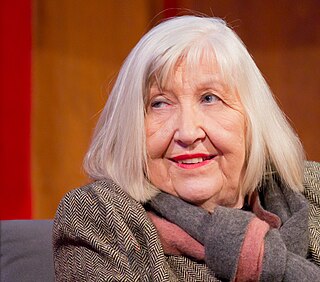
Lewis "Duke" Baltz was an American visual artist, photographer, and educator. He was an important figure in the New Topographics movement of the late 1970s. His best known work was monochrome photography of suburban landscapes and industrial parks which highlighted his commentary of void within the "American Dream".

Bernhard "Bernd" Becher, and Hilla Becher, née Wobeser, were German conceptual artists and photographers working as a collaborative duo. They are best known for their extensive series of photographic images, or typologies, of industrial buildings and structures, often organised in grids. As the founders of what has come to be known as the 'Becher school' or the Düsseldorf School of Photography, they influenced generations of documentary photographers and artists in Germany and abroad. They were awarded the Erasmus Prize and the Hasselblad Award.
Robert Adams is an American photographer who has focused on the changing landscape of the American West. His work first came to prominence in the mid-1970s through his book The New West (1974) and his participation in the exhibition New Topographics: Photographs of a Man-Altered Landscape in 1975. He has received two Guggenheim Fellowships, a MacArthur Fellowship, the Deutsche Börse Photography Prize and the Hasselblad Award.

Andreas Gursky is a German photographer and professor at the Kunstakademie Düsseldorf, Germany.

Hilla Becher was a German conceptual photographer. Becher was well known for her industrial photographs, or typologies, with longtime collaborator and husband, Bernd Becher. Her career spanned more than 50 years and included photographs from the United States, France, Germany, the Netherlands, Great Britain, Belgium, Switzerland, Luxembourg, and Italy.
Frank Gohlke is an American landscape photographer. He has been awarded two Guggenheim fellowships, two fellowships from the National Endowment for the Arts, and a Fulbright Scholar Grant. His work is included in numerous permanent collections, including those of Museum of Modern Art, New York; the Metropolitan Museum of Art; and the Art Institute of Chicago.
John Pfahl was an American photographer.

The George Eastman Museum, also referred to as George Eastman House and the International Museum of Photography and Film, is the world's oldest museum dedicated to photography and one of the world's oldest film archives, opened to the public in 1949 in Rochester, New York.

Stephen Shore is an American photographer known for his images of scenes and objects of the banal, and for his pioneering use of color in art photography. His books include Uncommon Places (1982) and American Surfaces (1999), photographs that he took on cross-country road trips in the 1970s.

Henry Wessel was an American photographer and educator. He made "obdurately spare and often wry black-and-white pictures of vernacular scenes in the American West".
Don Donaghy was a member of the New York school of photography.
Nathan Lyons was an American photographer, curator, and educator. He exhibited his photographs from 1956 onwards, produced books of his own and edited those of others.
Walter Landon Chappell was an American photographer and poet, primarily known for his black and white photography of landscapes, nature, and the human body.
Joseph Maurice Deal was an American photographer who specialized in depicting how the landscape was transformed by people.

The Walther Collection is a private non-profit organization dedicated to researching, collecting, exhibiting, and publishing modern and contemporary photography and video art. The collection has two exhibition spaces: the Walther Collection in Neu-Ulm/Burlafingen, in Germany, and the Walther Collection Project Space in New York City.
The Yancey Richardson Gallery is a dealer of fine art photography, based in New York City and founded in 1995 by Yancey Richardson. Formerly housed in the 560 Broadway building in Soho, the gallery moved to New York's Chelsea art district in 2000.
Jeff Brouws is a documentary photographer who resides in Upstate New York.
Jessica Todd Harper is an American fine-art photographer. She was born in Albany, New York in 1975.

Steel: Armco, Middletown, Ohio is a black and white photograph taken by American photographer Edward Weston in 1922.
Simone Nieweg is a German photographer, living in Düsseldorf, who photographs agricultural landscapes in rural Germany.








